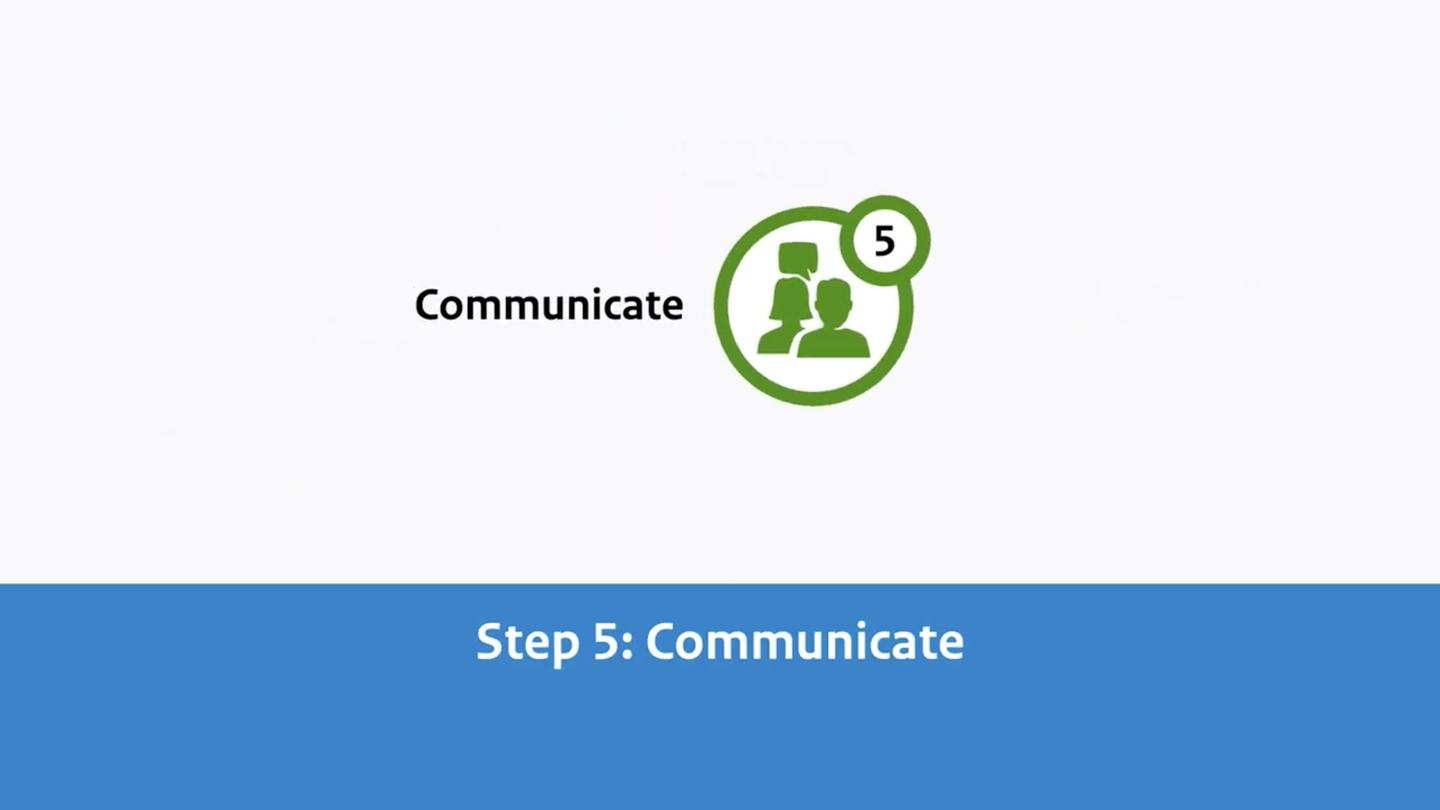Communicating about results
In Module 8, you learned how to monitor the progress of your actions. It is important to assess compliance with internal agreements and the impact of measures on sustainability risks. In this module, we discuss the final step in the cycle: communication. Communication about the results, as well as about the dilemmas, is an essential part of the due diligence process.
Communicating about results
It is incredibly important to communicate transparently about the actions taken to address sustainability risks. By sharing experiences, employees, customers, suppliers, and other stakeholders can learn from your experiences and appreciate your commitment.
Internal communication
In Module 2, we discussed the importance of embedding the six due diligence steps in the organisation. Communication plays a vital role in this process. It's essential to keep employees informed about the results of the policy. You can do this through existing channels, such as newsletters, monthly gatherings, quarterly sessions, or intranet. Regardless of the communication channels you use, make sure the topic comes up regularly. Also, take time to celebrate positive results. This creates enthusiasm within the organisation for International Responsible Business Conduct.
External communication
In the near future, due diligence will become a legal requirement, but companies can already distinguish themselves from competitors by working on sustainability. It is crucial to communicate that the organisation is working to make its supply chains more sustainable. However, stick to the facts. Greenwashing is heavily penalised. Choose appropriate channels to communicate the achieved results, such as news articles on the website, in the sustainability report, or as a separate brochure.
Celebrate what goes well, but also share dilemma’s
It's tempting to highlight all the positive results achieved. For example, "80% of all raw materials are now certified", "We only work with factories that are regularly audited", or "Together with our suppliers, we've found an innovative solution to phase out a certain chemical substance." It's good to share positive results and celebrate the positive impact achieved.
However, don't forget to share what's not going so well and where tough choices need to be made. For example, "Because there are no schools in the region where we buy cashew nuts, the children accompany their parents to the fields. We are exploring how we can address this with our supplier and local authorities." Or "Certain raw materials are essential in our final product that stem from mines where we cannot exclude misconduct. We are looking for a viable alternative."
Additional tips for transparent communication:
- Communicate regularly, preferably at least every quarter.
- Let involved employees speak.
- Ask your supplier to explain what concrete changes have occurred on the ground due to specific measures.
- Be modest.
- In addition to the achieved results, try to look ahead to your future plans.
Useful tools
- MVO Nederland’s website provides tips for creating a sustainability report.
- The various IRBC Covenants report on their results. Many of these annual reports include concrete examples of companies showcasing what went well and what challenges they faced.
Homework assignment
After this assignment, you will know which communication channels are suitable for sharing progress with internal and external stakeholders.
In the previous steps, you've identified which risks need to be addressed with priority, and you've identified solutions. You've also learned about monitoring progress. Now, let's explore how to share that progress.
- Create a list of ways employees are informed about company decisions, such as changes in remote working policies, health policies, etc.
- Identify channels through which news about IRBC results can be shared.
- Consider how information about results can be communicated with the outside world, for example, through the website, sustainability reports, newsletters, brochures, banners/posters, social media, etc.
- Identify the channels through which information about results can be shared with different target audiences (including customers, suppliers, potential new employees, civil society organisations, and concerned citizens).
- Determine who should be involved in translating the results into engaging communication for both internal and external stakeholders and make agreements about it.
